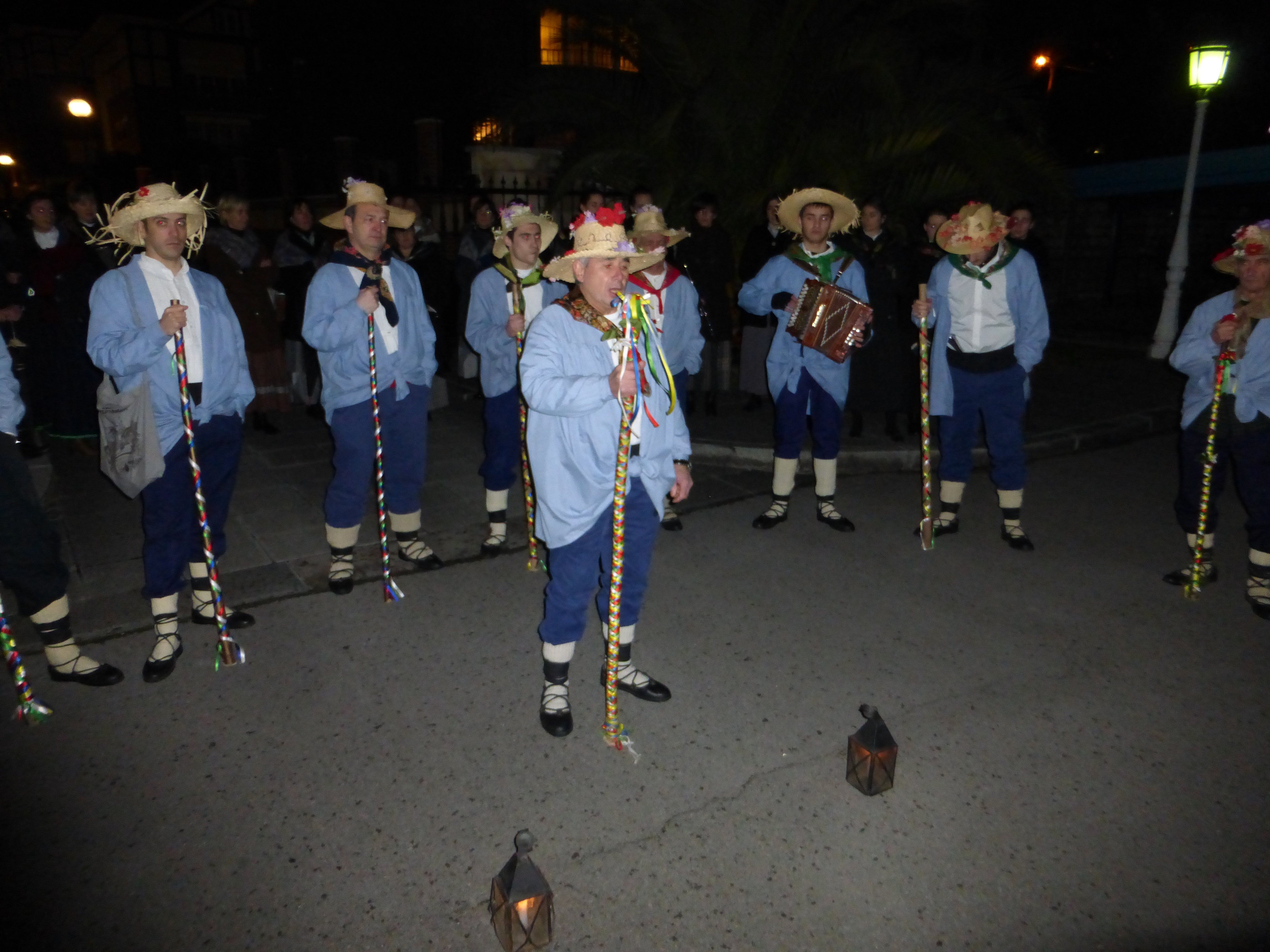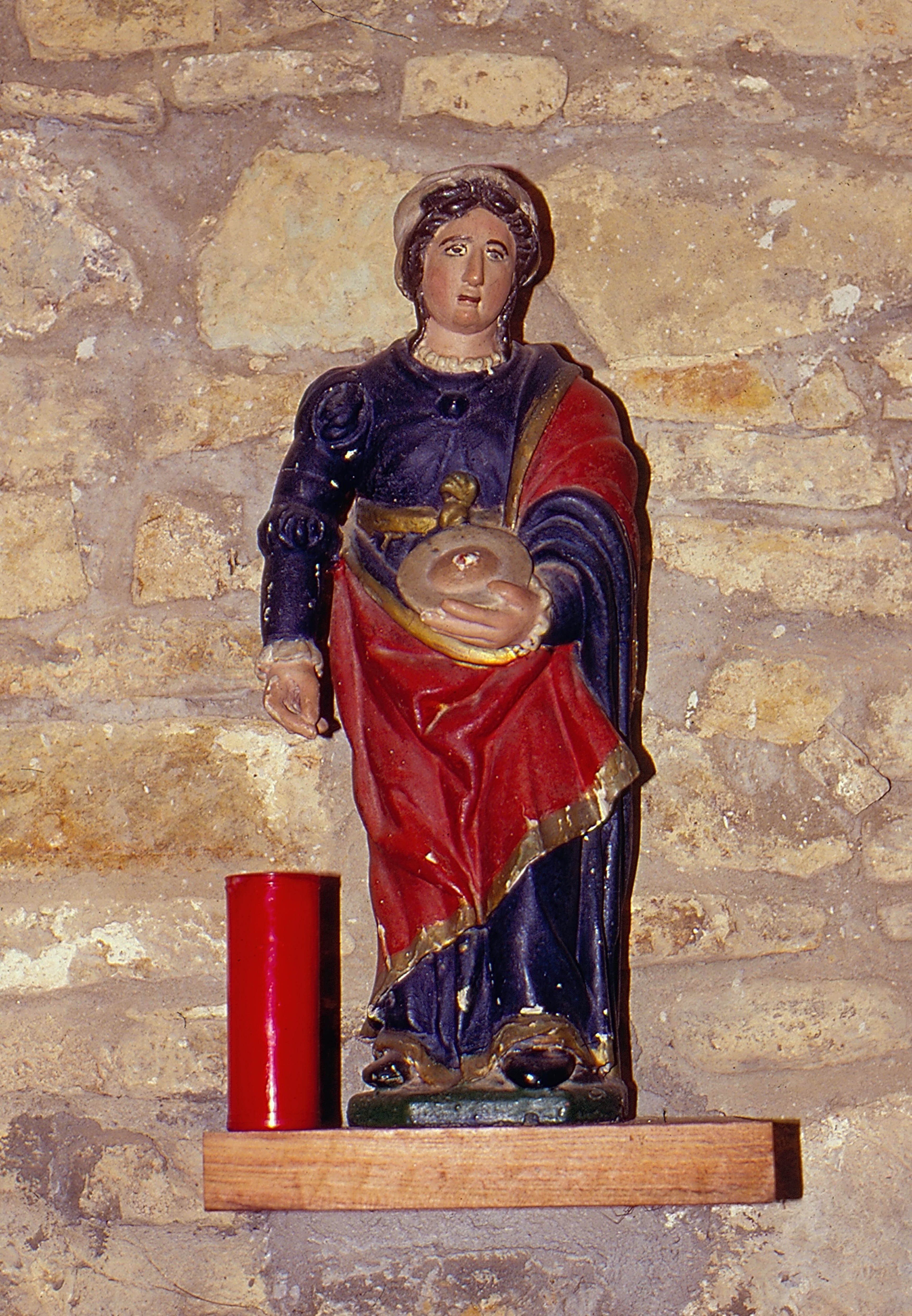Basque ethnography at a glance

Verse-singing on the eve of St Agatha’s Day, Galdakao (Bizkaia). Igone Etxebarria. Labayru Fundazioa Photographic Archive.
Since ancient times St Agatha’s Day is observed on 5 February by the Catholic Church as part of its liturgical calendar. Saint Agatha of Sicily is a Christian virgin martyress tortured and put to death during the Decian persecution in third-century Catania.
Candlemas, on 2 February, St Blaise’s Day, on 3 February, and the feast of St Agatha form a cluster of popular celebrations held around the same time of the winter season. Saint Agatha is venerated in different ways throughout Euskal Herria, bell-ringing and house-visiting wassailing to commemorate her life being widespread traditions since remote times.
In the past Angelus bells started to peal in parish churches and many hermitages on the eve of St Agatha’s Day. It was the women who made the bells of St Agatha’s hermitage in Saldropo (Zeanuri, Bizkaia) toll. Hours before, in the morning and during the afternoon, groups of youth and adults would parade neighbourhood to neighbourhood and door to door asking for alms for the bell-ringers.
Nowadays, verse-singing on the eve of St Agatha’s Day is performed by mixed choirs of young and older men and women, and children in some cases. Most of the singers wear traditional loose shirts and further typical attire. They light their way through streets and neighbourhoods with a lantern and accompany their chants by rhythmically knocking on the ground with sticks called makilak. Formerly, in certain places in Bizkaia, such as Gernika and Markina, the leader of the choir used to carry a small bell, which he sounded at every stop of the tour, most probably in order to attract the attention of the choristers and call for silence before starting to sing. The songs relate the saint’s martyrdom, and with time, new verses have been added, some of them of ironic nature, others are meant to make a request or to show disapproval, sometimes improvised or else transmitted from parents to children.
In the olden days the singers received walnuts, spicy sausages…, which, in some localities and according to Azkue’s records from the beginning of the 20th century, were shared with the bell-ringers. They collect money these days, usually destined to nursing homes and other charitable initiatives.

Figure of the saint at St Agatha’s Hermitage in Bikarregi, Dima (Bizkaia). José Ignacio García Muñoz. Labayru Fundazioa Photographic Archive.
Agatha is traditionally adored as the protector of breast afflictions in particular and women’s conditions in general, because amongst other tortures, she underwent the cutting off of her breasts. Breastfeeding women and postnatal mothers who struggle with milk production have popularly invoked her. In Bizkaia there are six hermitages dedicated to Saint Agatha and three more already disappeared.
At the end of the 19th century, it was customary on farms in Gernika and the neighbouring area to light on the eve the candles that had been blessed in church on Candlemas. This must be why she is also considered a guardian against the outbreak of fire in several regions.
References for further information: Ermitas de Bizkaia (3 vols.), Bilbao, 1987; and Origen y significación de las ermitas de Bizkaia, Bilbao, 1999.
Gurutzi Arregi – Etniker Bizkaia – Etniker Euskalerria Groups
Translated by Jaione Bilbao – Language Department – Labayru Fundazioa

